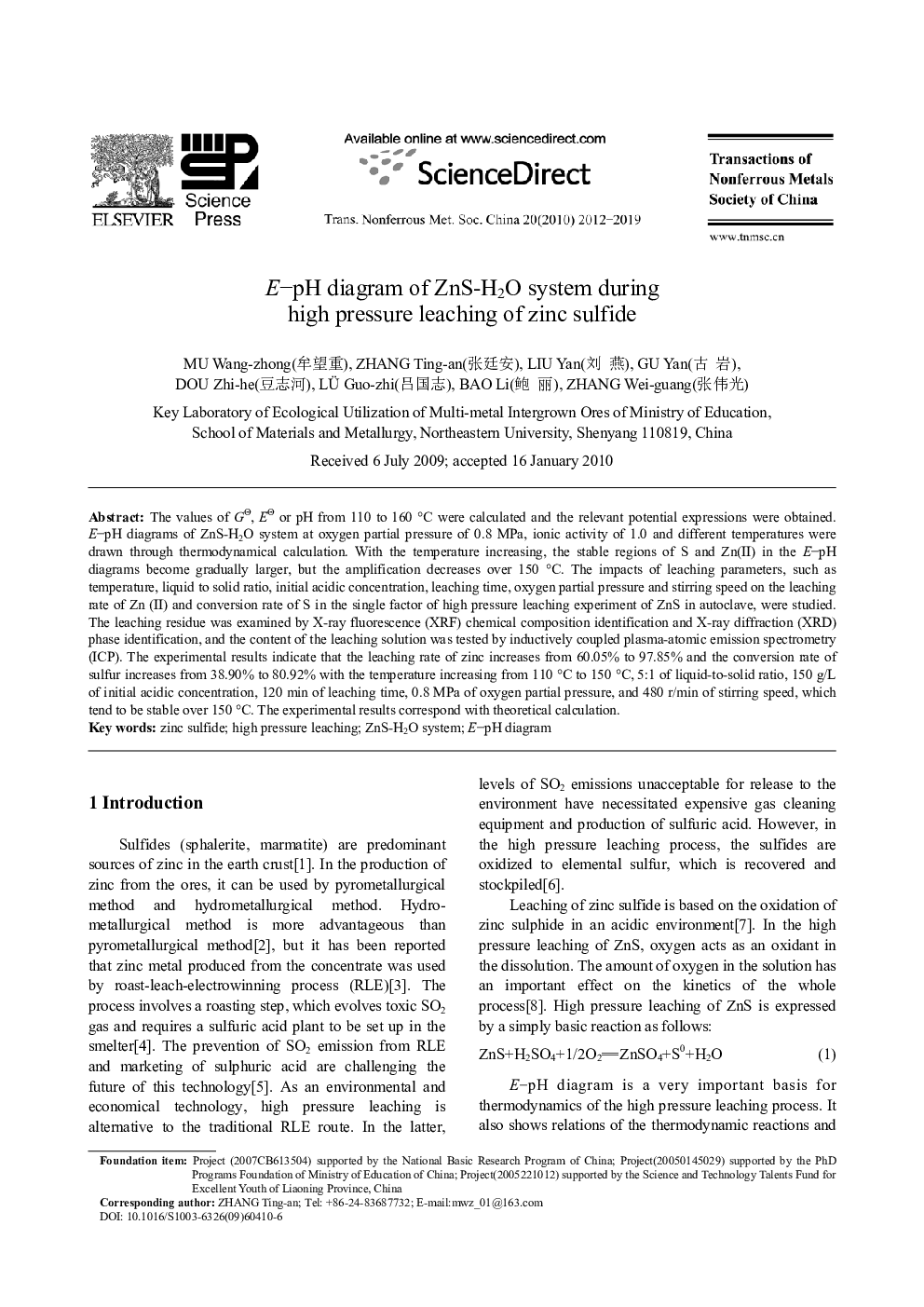| Article ID | Journal | Published Year | Pages | File Type |
|---|---|---|---|---|
| 1638992 | Transactions of Nonferrous Metals Society of China | 2019 | 8 Pages |
Abstract
The values of GT, ET or pH from 110 to 160 °C were calculated and the relevant potential expressions were obtained. E-pH diagrams of ZnS-H2O system at oxygen partial pressure of 0.8 MPa, ionic activity of 1.0 and different temperatures were drawn through thermodynamical calculation. With the temperature increasing, the stable regions of S and Zn(II) in the E-pH diagrams become gradually larger, but the amplification decreases over 150 °C. The impacts of leaching parameters, such as temperature, liquid to solid ratio, initial acidic concentration, leaching time, oxygen partial pressure and stirring speed on the leaching rate of Zn (II) and conversion rate of S in the single factor of high pressure leaching experiment of ZnS in autoclave, were studied. The leaching residue was examined by X-ray fluorescence (XRF) chemical composition identification and X-ray diffraction (XRD) phase identification, and the content of the leaching solution was tested by inductively coupled plasma-atomic emission spectrometry (ICP). The experimental results indicate that the leaching rate of zinc increases from 60.05% to 97.85% and the conversion rate of sulfur increases from 38.90% to 80.92% with the temperature increasing from 110 °C to 150 °C, 5:1 of liquid-to-solid ratio, 150 g/L of initial acidic concentration, 120 min of leaching time, 0.8 MPa of oxygen partial pressure, and 480 r/min of stirring speed, which tend to be stable over 150 °C. The experimental results correspond with theoretical calculation.
Keywords
Related Topics
Physical Sciences and Engineering
Materials Science
Metals and Alloys
Authors
Wang-zhong MU, Ting-an ZHANG, Yan LIU, Yan GU, Zhi-he DOU, Guo-zhi LÃ, Li BAO, Wei-guang ZHANG,
